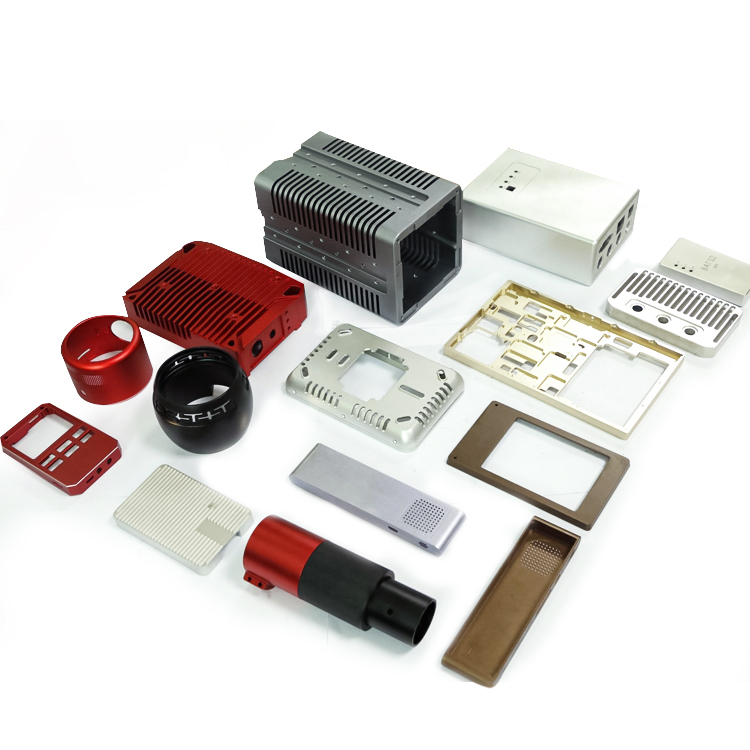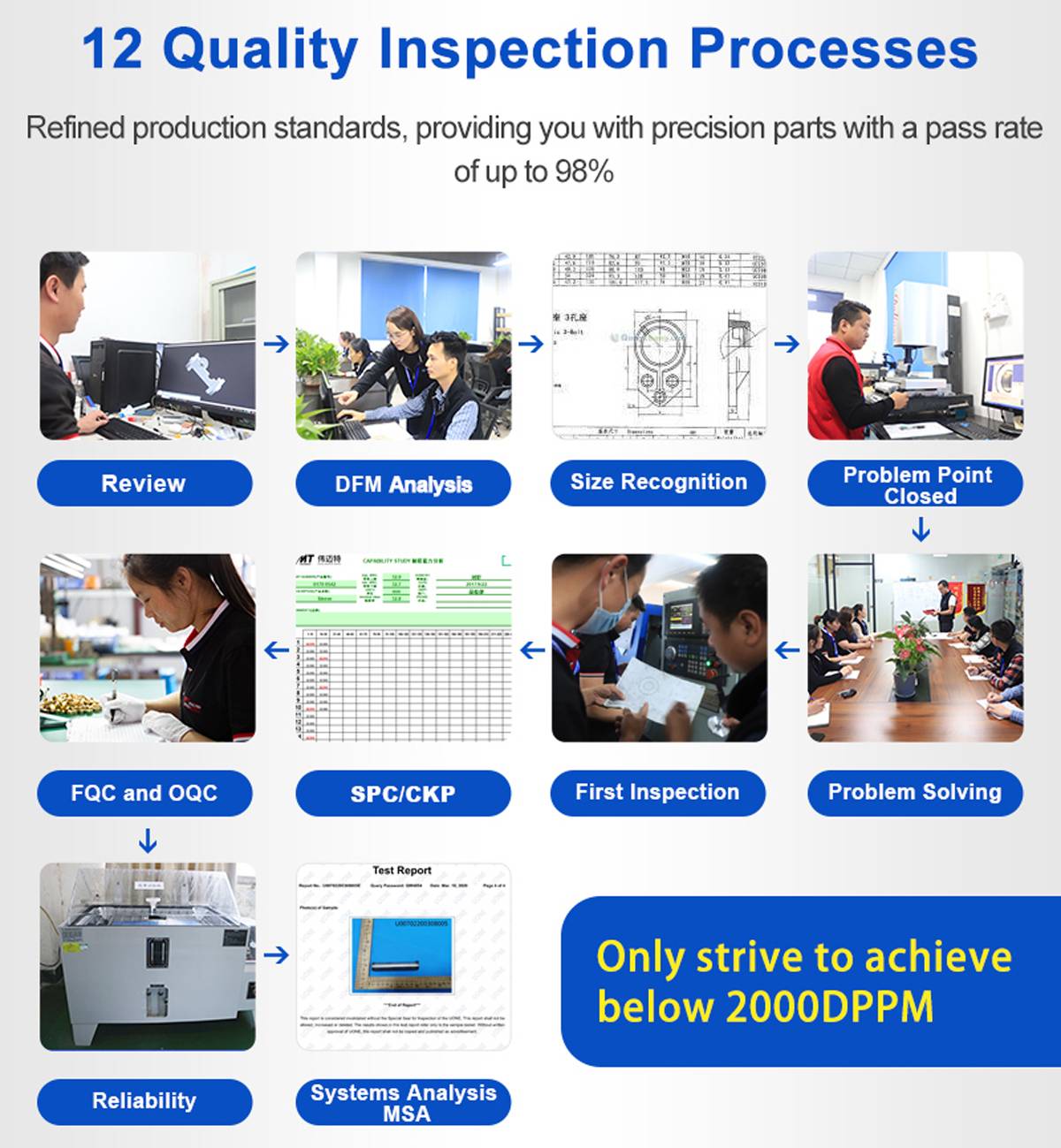15 years one-stop China custom CNC machining parts factory

Hey there I’m VMT Sam!
With 25 years of CNC machining experience we are committed to helping clients overcome 10000 complex part-processing challenges all to contribute to a better life through intelligent manufacturing. Contact us now
 90 |
Published by VMT at Jun 02 2024
90 |
Published by VMT at Jun 02 2024
The Impact of Heat Treatment on the Hardness of CNC Aluminum Parts
I. Introduction
In the field of CNC machining, aluminum is widely used for manufacturing various components due to its lightweight and high-strength properties. However, the hardness, strength, and wear resistance of raw aluminum often fall short of specific engineering requirements. Therefore, heat treatment has become a crucial method to enhance the performance of CNC-machined aluminum parts. This article will explore the concept, types, and applications of heat treatment technology in CNC aluminum machining, aiming to provide technical reference and guidance for CNC machining workshops.

II. Overview of Heat Treatment Technology
Heat treatment is a process that alters the internal structure and properties of materials through heating, holding, and cooling. In CNC aluminum machining, heat treatment is primarily used to improve the material's hardness, strength, toughness, wear resistance, and corrosion resistance. Common heat treatment techniques include solution treatment, aging treatment, and annealing treatment.
III. Applications of Heat Treatment in CNC Aluminum Machining
Solution Treatment
Solution treatment involves heating aluminum alloys to a solution temperature to dissolve alloying elements into the aluminum matrix, followed by rapid cooling. This process significantly enhances the hardness and strength of aluminum alloys. In CNC aluminum machining, solution treatment is commonly used to improve the wear resistance and corrosion resistance of parts.
Aging Treatment
Aging treatment follows solution treatment, where aluminum alloys are reheated to a certain temperature and held for a period to precipitate hardening phases. Aging treatment further increases the strength and hardness of aluminum alloys while maintaining good ductility and toughness. In CNC aluminum machining, aging treatment is often used to enhance the strength and hardness of parts to meet specific engineering requirements.
Annealing Treatment
Annealing treatment involves heating and slowly cooling aluminum alloys to eliminate residual stress and increase ductility. In CNC aluminum machining, annealing is mainly used to improve the material's machinability and reduce hardness, facilitating subsequent machining and forming.
IV. The Impact of Heat Treatment on the Hardness of CNC Aluminum Parts
Mechanism of Hardness Improvement
During heat treatment, the microstructure of aluminum alloys changes, such as grain refinement and precipitation of hardening phases, which contribute to increased hardness. Specifically, solution treatment allows alloying elements to fully dissolve into the aluminum matrix, forming a uniform solid solution. Aging treatment disperses fine precipitates within the matrix, which hinder dislocation movement and deformation under stress, thereby enhancing hardness.
Characteristics of Hardness Changes
The impact of heat treatment on the hardness of CNC aluminum parts exhibits certain characteristics. Firstly, different heat treatment processes affect hardness to varying degrees. For example, solution and aging treatments significantly increase hardness, whereas annealing reduces it. Secondly, the effectiveness of heat treatment on hardness improvement depends on the material's original state, alloy composition, and treatment temperature and duration. Thus, selecting the appropriate heat treatment process and parameters based on specific conditions is crucial in practical applications.
Relationship Between Hardness and Performance
Hardness is a key indicator of material performance, closely related to strength, wear resistance, and corrosion resistance. Enhancing the hardness of CNC aluminum parts through heat treatment can improve their overall performance. For instance, increased hardness enhances wear resistance and corrosion resistance, extending the part's service life. Additionally, appropriate hardness improves machining precision and stability, ensuring product quality.

V. How CNC Machining Workshops Can Apply Heat Treatment Technology
Choosing the Right Heat Treatment Process
CNC machining workshops should select suitable heat treatment processes based on the specific requirements of the parts and material characteristics. For parts requiring increased hardness and wear resistance, solution and aging treatments are recommended. For parts needing improved machinability and reduced hardness, annealing treatment is appropriate.
Controlling Heat Treatment Parameters
The selection of heat treatment parameters significantly impacts part performance. CNC machining workshops should carefully control temperature, duration, and cooling rates to achieve the desired performance improvements. Regular maintenance and calibration of heat treatment equipment are also essential to ensure accuracy and stability.
Strengthening Quality Control and Inspection
Heat-treated CNC aluminum parts require stringent quality control and inspection. CNC machining workshops should establish comprehensive quality management systems and inspection methods to assess hardness, strength, toughness, and other properties. Non-conforming parts should be reworked or scrapped promptly to ensure product quality and delivery timelines.

VI. Conclusion
Heat treatment technology is a vital means of enhancing the performance of CNC aluminum parts. By selecting appropriate heat treatment processes and parameters, and reinforcing quality control and inspection, it is possible to significantly improve the hardness and overall performance of parts to meet specific engineering demands. As CNC machining technology continues to evolve, heat treatment technology will play an increasingly important role in the field of CNC aluminum machining.
Ready To Start Your Next Project?
Get Instant Quote

Request a Free Quote
Send us a message if you have any questions or request a quote. We will get back to you ASAP!